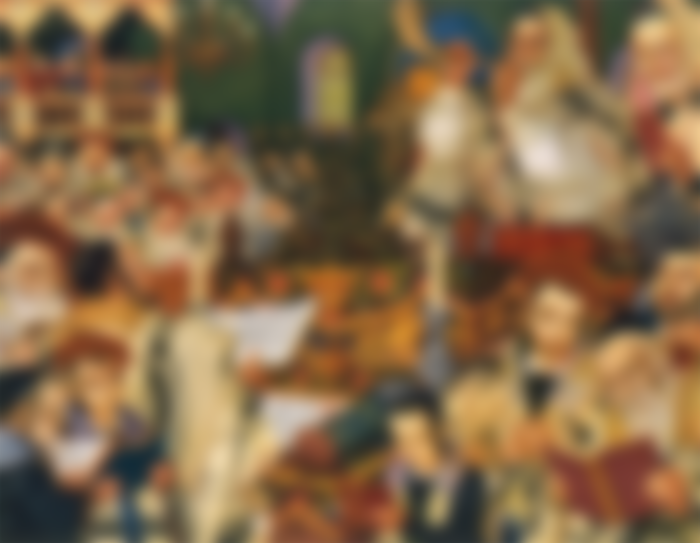For most people on the planet, December is a symbol of saying goodbye to the old year, a month of nostalgia and memories, but also new decisions and plans. We eagerly await January 1 as the date when we will replace calendars and start a new page of our lives, and the celebration of December 31 is already traditionally the "craziest night" of the year. However, there is no holiday euphoria anywhere in the world at this time of year! Traditionally, the New Year is celebrated around the world on January 1, but several cultures did not fit into this track. The most famous "alternative" New Years are Chinese, Jewish, Islamic and Orthodox, but that is just the beginning!
CHINESE NEW YEAR!

More than 1.3 billion people are celebrating the Chinese New Year, and it is celebrated between January 21 and February 21. The welcome date changes every year based on the lunar and solar calendars, and begins with the second new moon, after the winter solstice. This holiday is also known as the Spring Festival (Chun jie) and is celebrated for 40 days.
The Chinese lunar calendar has its roots in 2,637 BC, and the year is divided into 12 months, each of which has 39.5 days. One lunar cycle lasts 60 years, and it consists of five smaller cycles, each of which lasts 12 years and is in the sign of an animal. Legend has it that the Buddha asked all animals to come to him before he left the earth. As only 12 animals came to say goodbye to him, he named one of them each year for the Buddha Award. This year marks the year of the dragon. Chinese New Year always passes in a cheerful, rich, carnival atmosphere where the main attraction is the silk dragon that is at the head of every parade and symbolizes strength.
JEWISH NEW YEAR!

Jews celebrate the so-called Rosh Hashanah, their New Year, which according to the Gregorian calendar can be between September 5 and October 5. It is also called the "Feast of Trumpets".
However, the Jewish tradition has no practice of rejoicing at this time of year, it is actually a period of self-examination, when believers try to atone for all sins, but also to forgive others. He is blowing into a shofar whose sounds, reminiscent of crying, should call for repentance. Traditional Jewry knows about the custom of going to a river where there are fish during the first morning of this holiday. Prayers are said, and crumbs of bread are thrown into the water, symbolizing the rejection of sin. This holiday begins the period called "ten days of repentance" and ends with the holiday of Yom Kippur.
PERSIAN NEW YEAR!

The Persian or Iranian New Year marks the first day of spring and is called Noruz (literally translated as New Day), which is a custom more than 4,000 years old that dates back to the old Persian religion - Mazdaism and Zoroastrianism. The only difference is that instead of the Parisian holy book, the Qur'an is now on the festive table. For Noruz himself, each household sets "sofra sedam sin" which consists of greens (like wheat that we plant before Christmas), apple, saman - a type of halva, garlic, vinegar, fruit sentj and a spice obtained from the mentioned fruit.
The Persian Santa Claus is called Amu Noruz and his "uniform" is colorful clothes, a felt hat and a face smeared with charcoal. It is a tradition to walk the streets and sing humorous songs. Noruz is celebrated by more than 300 million people around the world, primarily in Iran, Iraq, Afghanistan and Azerbaijan, and the official holiday is also in the province of British Columbia in Canada.
THAILAND NEW YEAR!

Songkran is celebrated in Thailand as a three-day water festival from April 13 to 15. That’s when the Buddhist New Year is actually celebrated. During the parade, huge statues of Buddha are placed, from which water flows to passers-by. In small villages, young people are sprayed with water, and it is customary to release fish into the river as an act of kindness. For Songkran, people tie a thread around each other's wrists to show respect. A person can even get about 30 threads, each from someone else, and they are worn on the hand until they fall off.
INDIAN NEW YEAR!

India is a country with so many cultures and religious groups, that it is difficult to count all the New Years that are celebrated here. Most people celebrate this holiday on January 1, as well as the rest of the world, but equal attention is paid to those dates that are related to certain Hindu or Buddhist rituals.
One of the holidays that mark the beginning of the new year in India is Diwali, when a three-day Festival of Light is organized. This parade is celebrated somewhere in the period from mid-October to mid-November, and the darkest autumn night begins, the one when there is no moon in the sky, in which thousands and thousands of candles and lamps are lit both in the house and on the streets.
OTHER NEW YEARS!

Indonesia celebrates two New Years - officially celebrating the "classic" on January 1, but it is also recognized Islamic, whose date varies from year to year.
The Russian and Serbian Orthodox Churches also celebrate the New Year according to the Julian calendar, which is celebrated on the night between January 13 and 14.
The Vietnamese New Year will in most cases fall on the same day as the Chinese, unless a time difference is involved. Therefore they differ only in that in Vietnam the Hanoi time zone is used instead of the Beijing one.
In Morocco, the beginning of the New Year is marked on the tenth day of Muharram - the first month of the Islamic year. Recall, the Islamic calendar is 11 days shorter than ours.






I wish all people of the world Happy New year. Let all good begin in this year. We all hope we have much more health in this and many other years, and then we'll be happy and we'll meet each other after beating this annoying virus spread to the world. Cheers!